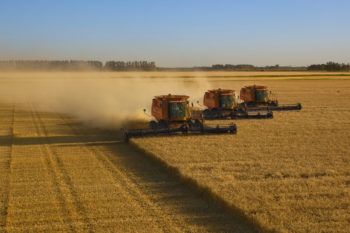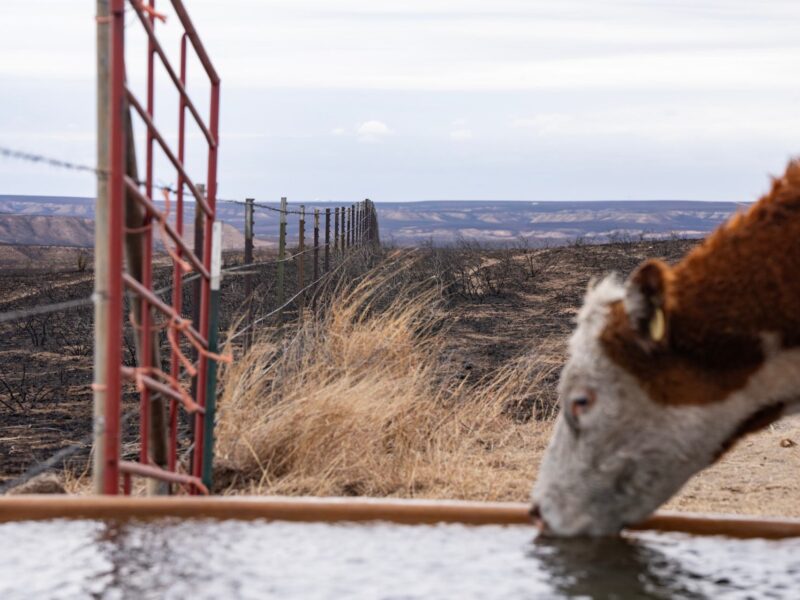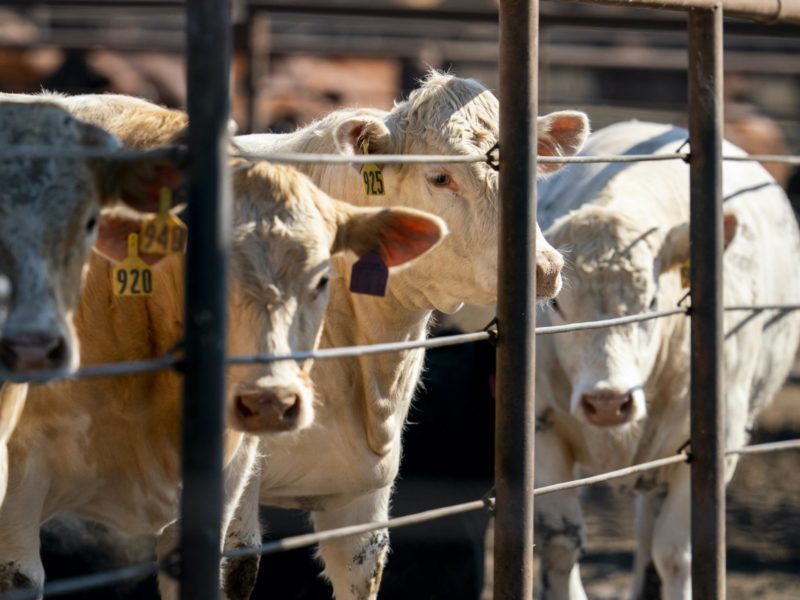Grain Market Volatility Causes Uncertainty

People need to eat, so grain farmers must keep planting, plowing and harvesting. But a volatile grain market in reaction to the COVID-19 pandemic has economists and producers working overtime to plan for this summer’s growing season, according to Texas A&M AgriLife Extension Service economists.
“With COVID-19, there is a lot of uncertainty and commodity prices are all over the place,” said Luis Ribera, AgriLife Extension economist and director of the Center for North American Studies at Texas A&M University, College Station. “There are a lot more questions than answers right now. The big question is: When will we reach a peak?”
Ribera said this is the first time the U.S. is experiencing this situation. When H1N1 and SARS occurred, the market reacted, but not at this level because those viruses didn’t propagate as quickly as COVID-19.
“But on the bright side, we still have to eat,” he said. “That’s something that helps agricultural countries like ours. The demand will still be there, it just might not be as strong until we get beyond the virus.”
Early grain market responses to COVID-19
So far, the corn market is down, but the soybean and wheat markets are up. And cotton markets are struggling.
As people rushed to supermarkets to stock up on food and supplies, the supply chain struggled to keep up with the demand, said Mark Welch, AgriLife Extension Service grains economist. That panic buying has left producers with some opportunities and some challenges.
“Moving forward, we need to keep in mind – people are still going to eat,” Welch said. “They may be changing the way they do it and the way they buy it – buying more groceries and eating at home vs. eating out. But as far as agriculture is concerned, it is important we continue to deliver all the staples we provide.”
Uncertainty was created when people began stockpiling some products, causing shortages, he said. But that short-term surge is not likely sustainable.
Ribera said the restaurant industry and school system also are major players, because more than half our meals are normally purchased outside the home.
“Not as many lunches are being served at schools or by restaurants, so that could potentially lower the demand for some food,” he said. “Low demand and uncertainty could depress prices. The market reacts to signals.”
Grain market reactions, opportunities, challenges
Welch said the different challenges and opportunities in grain markets that have emerged are:
- Corn prices are tied to crude oil and gasoline and the direct fuel component of ethanol. About 40% of the demand for corn is for fuel. Since Jan. 1, crude oil is down about 60%; corn prices are down 10% to 15%.
- Cotton markets are tied to people’s income. Any purchases that can be put off, they probably will, and that includes apparel. Since Jan. 1 the stock market is down 20% to 25%; cotton is down about 25%.
- The soybean market experienced a rally in prices as the prospects of export demand to nations recovering from the early onset of the coronavirus improved.
- The wheat market went up in response to domestic demand to restock bread and wheat-based products on grocery shelves. There is word Russia may impose export quotas that would support U.S. wheat export sales.
“It is certainly an opportunity for wheat producers to take advantage of those markets at this time,” he said. “Wheat initially fell off to about $4.20 a bushel and ran up quickly to over $5 per bushel, giving producers an opportunity to price wheat.”
Welch said it will take weeks, possibly months, to get beyond overreactions that hit the market due to fear and uncertainty. During this time, there seems to be a disconnect between the price of the commodity and the underlying market.
“We don’t have a shortage of wheat at all in the world, but we saw empty bread shelves,” he said. “So, is this due to hoarding around the world? There’s lots of wheat in the world right now, it just may not be where it is needed right now. Six weeks ago, there was no talk of a shortage.”
Welch explained when the markets are reflective of fundamentals, it is an indication the long-term outlook is settling down and prices are once again based on underlying supply and demand. In corn, the price pushed too low. In wheat, it has pushed too high.
“The nice thing about agriculture, once we begin to do the things we do — planting the next crop, seeing it grow and develop, harvesting wheat, normal productive activities that are observable and manageable — that will reassure markets,” he said.
“Agricultural producers are the lifeblood of the food supply, and our Texas A&M AgriLife faculty will continue to help them find solutions to the problems COVID-19 is creating,” said Patrick J. Stover, vice chancellor of Texas A&M AgriLife, dean of the College of Agriculture and Life Sciences and director of Texas A&M AgriLife Research. “This will ensure the safest, most abundant, nutritious and affordable food supply possible.”
A look at the export/import market aspect
Ribera said another factor moving forward will be what the export markets do as the world deals with the pandemic.
“We export more food than any other country in the world,” he said. “We could see a reduction in imports from other countries as the markets settle. Prices are not looking good as the world goes into a recession, and we might expect to see less demand for all agricultural products.
“The pandemic – how is it affecting our competition, such as Brazil, which is a major competitor for our exports? If they have less production, we can get larger share of the export market,” Ribera said. “But we have to wait and see what happens. We are very efficient and that helps us compete.”
If other countries provide any kind of marketing restrictions, such as Russia, that will create opportunities for the U.S., Welch said. And for China, in the recovery phase, their economy may be getting started again, so more opportunity for U.S. producers may appear.
Controlling what you can, preparing for what you can’t
“Anytime we have this kind of turmoil in our markets, it’s unsettling, it’s uncertain, it’s a challenge,” Welch said. “Some markets, there will be some very profitable opportunities. Others, it will have a window of some extended difficult times.”
He stressed producers should focus on the efficiency of the process to equip themselves to survive:
- Control — assess what factors are still in my control and accept those that are not – interest rates, fuel costs, etc..
- Containment and contingency planning — based on the best assessment possible of current and future needs, determine how to best garner the needed resources and prepare for disruptions in key inputs, including personnel.
- Conserve — assess whether the current situation provides opportunities to lower costs or improve efficiency to lower cost of production – get breakeven prices as low as possible – for this season and beyond.
“A key feature of a marketing plan in any year is to be the most efficient producer possible, especially in environments such as this one,” Welch said.
This article by Kay Ledbetter originally appeared on AgriLife Today.





